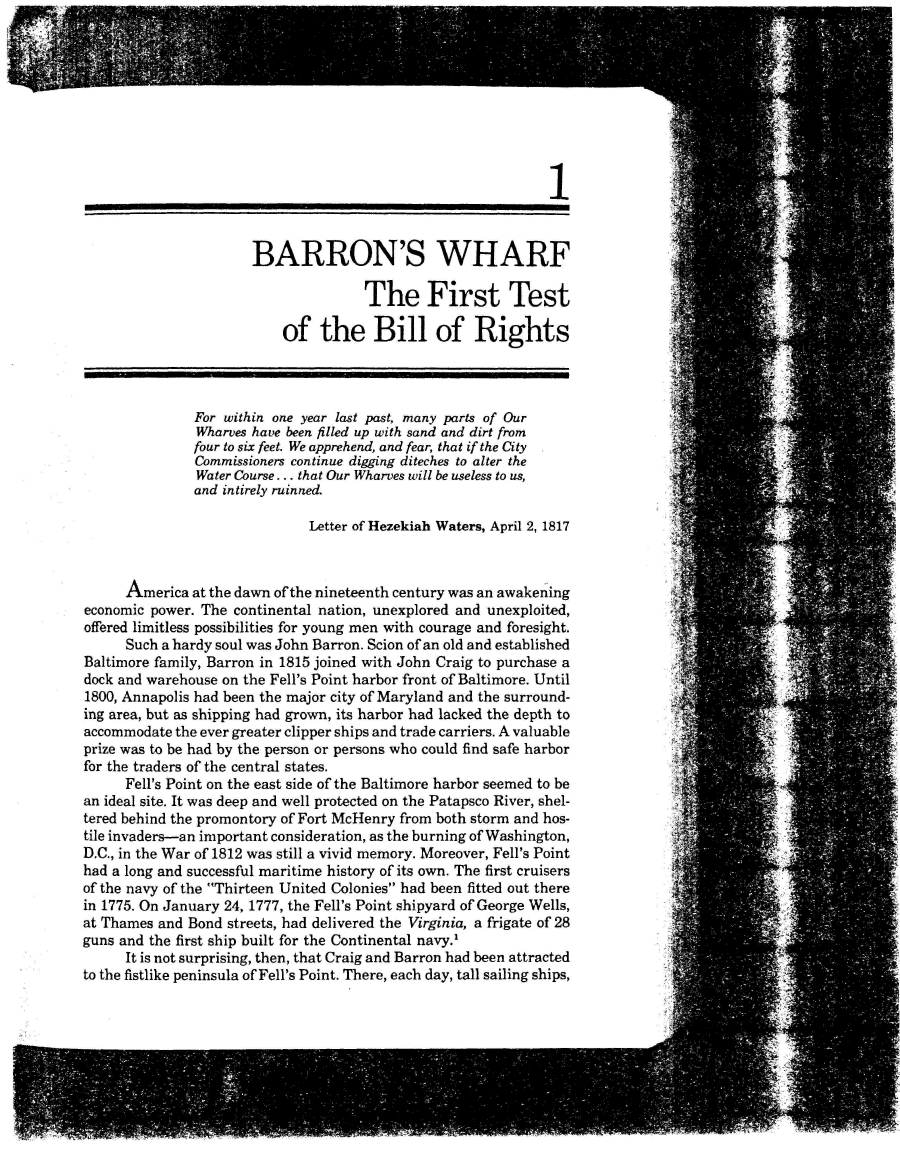|
1
BARRON'S WHARF
The First Test
of the Bill of Rights
For within one year last past, many parts of Our
Wharves have been filled up with sand and dirt from
four to six. feet. We apprehend, and fear, that if the City
Commissioners continue digging diteches to alter the
Water Course... that Our Wharves will be useless to us,
and intirely ruinned.
Letter of Hezekiah Waters, April 2, 1817
America at the dawn of the nineteenth century was an awakening
economic power. The continental nation, unexplored and unexploited,
offered limitless possibilities for young men with courage and foresight.
Such a hardy soul was John Barron. Scion of an old and established
Baltimore family, Barron in 1815 joined with John Craig to purchase a
dock and warehouse on the Fell's Point harbor front of Baltimore. Until
1800, Annapolis had been the major city of Maryland and the surround-
ing area, but as shipping had grown, its harbor had lacked the depth to
accommodate the ever greater clipper ships and trade carriers. A valuable
prize was to be had by the person or persons who could find safe harbor
for the traders of the central states.
Fell's Point on the east side of the Baltimore harbor seemed to be
an ideal site. It was deep and well protected on the Patapsco River, shel-
tered behind the promontory of Fort McHenry from both storm and hos-
tile invaders—an important consideration, as the burning of Washington,
D.C., in the War of 1812 was still a vivid memory. Moreover, Fell's Point
had a long and successful maritime history of its own. The first cruisers
of the navy of the "Thirteen United Colonies" had been fitted out there
in 1775. On January 24, 1777, the Fell's Point shipyard of George Wells,
at Thames and Bond streets, had delivered the Virginia, a frigate of 28
guns and the first ship built for the Continental navy.1
It is not surprising, then, that Craig and Barron had been attracted
to the fistlike peninsula of Fell's Point. There, each day, tall sailing ships,
|

